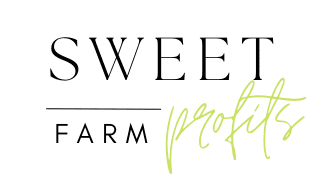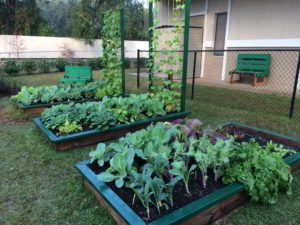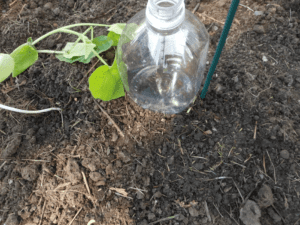In Kenyan households, few vegetables hold as much significance as sukuma wiki or collard greens.
Whether fried solo or combined with other savory delights, sukuma wiki graces dinner tables across the nation, providing essential nutrients and vibrant flavors.
For those considering venturing into sukuma wiki cultivation, this blog post serves as your ultimate guide, offering detailed insights, expert tips, and practical advice to ensure bountiful harvests and culinary delights.
Understanding Sukuma Wiki
Sukuma wiki, derived from the Swahili phrase meaning “to push the week,” is aptly named for its affordability and accessibility, making it a staple in many households.
This leafy green vegetable, resembling cabbage but without a head, boasts a nutritional profile that includes beta carotene, vitamin K, vitamin C, iron, and calcium.
Its versatility in the kitchen, being commonly fried alone or alongside other vegetables, underscores its significance in Kenyan cuisine.
Selecting Varieties
Before delving into cultivation, it’s crucial to select the right variety of sukuma wiki suited to your needs and growing conditions.
Varieties such as Mfalme F1, Thousand-Headed, Sukuma Wiki Hybrid, and Marrow Stem offer unique characteristics ranging from extended harvesting periods to resistance to common pests and diseases.
Choosing the appropriate variety ensures optimal growth and maximum yield.
Ecological Requirements
Successful sukuma wiki cultivation hinges on understanding its ecological requirements.
While it can adapt to various climatic conditions, sukuma wiki thrives best at altitudes between 800m to 2200m above sea level.
Adequate sunlight, well-drained soils rich in organic matter, and sufficient water supply are essential for its growth and development.
Monitoring rainfall patterns and maintaining soil pH within the optimal range of 5.5 to 7.0 are critical factors to consider.
Land Preparation
Preparing the land lays the foundation for a successful sukuma wiki harvest.
Deep plowing facilitates root development, while the removal of perennial weeds minimizes competition for nutrients.
Early land preparation exposes pests to sunlight, aiding in their control naturally.
By ensuring the soil is adequately prepared, growers set the stage for healthy plant growth and robust yields.
Nursery Preparation
The nursery phase is crucial for establishing strong sukuma wiki seedlings.
Whether sowing seeds in open nurseries or seedling trays, attention to detail is paramount.
Incorporating well-decomposed manure and balanced fertilizers like DAP fosters healthy seedling development.
Proper spacing, mulching, and protection from adverse weather conditions ensure optimal germination and seedling growth.
Transplanting and Spacing
Transplanting seedlings at the right stage of growth is essential for their survival and subsequent development.
Careful attention to spacing based on leaf size ensures adequate airflow and sunlight penetration, contributing to healthier plants and higher yields.
Transplanting during cooler times of the day minimizes stress on seedlings, promoting successful establishment in the field.
Mulching and Weed Control
Mulching plays a vital role in conserving soil moisture, suppressing weed growth, and maintaining soil temperature.
Organic mulches such as straw or grass clippings provide additional nutrients as they decompose, benefiting sukuma wiki growth.
Manual or semi-mechanical weeding is necessary to eliminate competing plants and ensure sukuma wiki plants receive optimal nutrition and water uptake.
Fertilization and Pest Management
Regular fertilization with organic matter and balanced fertilizers is essential for sukuma wiki’s nutrient requirements.
Monitoring for common pests like aphids, thrips, caterpillars, and diamond black moths allows for timely intervention to prevent damage to crops.
Integrated pest management strategies, including natural predators and targeted pesticides, help maintain a healthy sukuma wiki crop.
Disease Prevention
Preventing diseases such as black rot and powdery mildew requires proactive measures.
Proper sanitation practices, adequate airflow, and timely application of fungicides help mitigate disease incidence.
Monitoring for early signs of disease and implementing preventive measures are crucial for safeguarding sukuma wiki crops and ensuring a successful harvest.
Harvesting and Storage
Harvesting sukuma wiki at the right stage of maturity ensures optimal flavor and nutrient content.
Selectively picking outer leaves allows for continuous growth and prolonged harvest periods.
Proper post-harvest handling, including refrigeration or freezing, preserves sukuma wiki freshness and extends its shelf life.
Timely delivery to markets or kitchens ensures consumers enjoy the full benefits of freshly harvested sukuma wiki.
Conclusion
In conclusion, sukuma wiki cultivation offers a rewarding experience for both novice and experienced growers alike.
By following the comprehensive guide outlined in this blog post, growers can master the art of sukuma wiki cultivation, from selecting suitable varieties to implementing best practices in land preparation, nursery management, transplanting, and post-harvest handling.
With dedication, patience, and a commitment to excellence, growers can enjoy abundant harvests of this beloved vegetable, enriching diets and fostering a thriving agricultural sector in Kenya!




